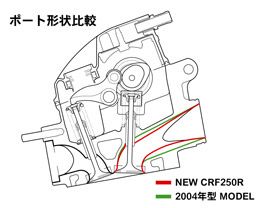The reference to needing back pressure for a motor to run properly has been mentioned many times with some debate.
I did some quick looking around and it seems exhaust back pressure isn't, for the most part, a good thing.
http://www.uucmotorwerks.com/html_pr...torquemyth.htm
Destroying a myth.
Some say that "an engine needs backpressure to work correctly." Is this true?
No. It would be more correct to say, "a perfectly stock engine that cannot adjust its fuel delivery needs backpressure to work correctly." This idea is a myth. As with all myths, however, there is a hint of fact with this one. Particularly, some people equate backpressure with torque, and others fear that too little backpressure will lead to valve burning.
The first reason why people say "backpressure is good" is because they believe that increased backpressure by itself will increase torque, particularly with a stock exhaust manifold. Granted, some stock manifolds act somewhat like performance headers at low RPM, but these manifolds will exhibit poor performance at higher RPM. This, however does not automatically lead to the conclusion that backpressure produces more torque. The increase in torque is not due to backpressure, but to the effects of changes in fuel/air mixture, which will be described in more detail below.
The other reason why people say "backpressure is good" is because they hear that cars (or motorcycles) that have had performance exhaust work done to them would then go on to burn exhaust valves. Now, it is true that such valve burning has occurred as a result of the exhaust mods, but it isn't due merely to a lack of backpressure.
The internal combustion engine is a complex, dynamic collection of different systems working together to convert the stored power in gasoline into mechanical energy to push a car down the road. Anytime one of these systems are modified, that mod will also indirectly affect the other systems, as well.
Now, valve burning occurs as a result of a very lean-burning engine. In order to achieve a theoretical optimal combustion, an engine needs 14.7 parts of oxygen by mass to 1 part of gasoline (again, by mass). This is referred to as a stochiometric (chemically correct) mixture, and is commonly referred to as a 14.7:1 mix. If an engine burns with less oxygen present (13:1, 12:1, etc...), it is said to run rich. Conversely, if the engine runs with more oxygen present (16:1, 17:1, etc...), it is said to run lean. Today's engines are designed to run at 14.7:1 for normally cruising, with rich mixtures on acceleration or warm-up, and lean mixtures while decelerating.
Getting back to the discussion, the reason that exhaust valves burn is because the engine is burning lean. Normal engines will tolerate lean burning for a little bit, but not for sustained periods of time. The reason why the engine is burning lean to begin with is that the reduction in backpressure is causing more air to be drawn into the combustion chamber than before. Earlier cars (and motorcycles) with carburetion often could not adjust because of the way that backpressure caused air to flow backwards through the carburetor after the air already got loaded down with fuel, and caused the air to receive a second load of fuel. While a bad design, it was nonetheless used in a lot of vehicles. Once these vehicles received performance mods that reduced backpressure, they no longer had that double-loading effect, and then tended to burn valves because of the resulting over-lean condition. This, incidentally, also provides a basis for the "torque increase" seen if backpressure is maintained. As the fuel/air mixture becomes leaner, the resultant combustion will produce progressively less and less of the force needed to produce torque.
Modern BMWs don't have to worry about the effects described above, because the DME (car's computer) that controls the engine will detect that the engine is burning leaner than before, and will adjust fuel injection to compensate. So, in effect, reducing backpressure really does two good things: The engine can use work otherwise spent pushing exhaust gas out the tailpipe to propel the car forward, and the engine breathes better. Of course, the DME's ability to adjust fuel injection is limited by the physical parameters of the injection system (such as injector maximum flow rate and fuel system pressure), but with exhaust backpressure reduction, these limits won't be reached.
- Adapted from Thomas V.





 Reply With Quote
Reply With Quote







